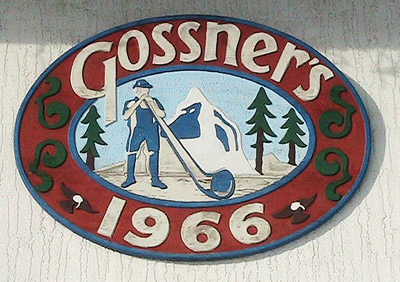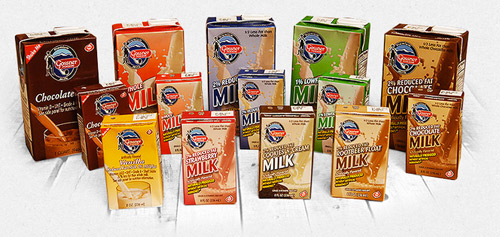Milk in a box: Gossner’s high-temperature milk travels the world
October 28th, 2015 Posted in OpinionLOGAN — “Put the milk back in the fridge” is a common command in every household. And for good reason.
Milk contains bacteria naturally that are both healthy and potentially harmful to humans. The only way the bacteria can cause harm, however, is if the milk reaches temperatures that let germs multiply. If milk is properly refrigerated, it can last up to three weeks, says USU dairy extension specialist Allen Young.
“Milk as it comes from the cow has bacteria that are normal, and some that may cause health problems in humans,” Young said. “Keeping the milk cold using refrigeration slows down and can prevent the growth of some bacteria.”
But some milk producers also offer milk in a box that can last up to a year without refrigeration.
Gossner Foods in Logan specializes in shelf-stable milk in single-serving size and quarts.
Kelly Luthi, Gossner’s general manager of septic operations, says that in many parts of the world, there isn’t much space for a refrigerator, so people outside of the United States routinely keep milk on the shelf.
If milk lasts so much longer on the shelf, why doesn’t this country convert to shelf-stable milk?
Luthi thinks it’s because the United States has such commonly available refrigeration. Americans also just prefer the taste of chilled milk, he said, although he does think the market for boxed milk is growing in this country. Gossner’s boxed milk comes in whole, low-fat and skim, in flavors including chocolate, strawberry, vanilla and root beer.
“I think people are seeing all the advantages of being able to use the shelf -stable milk in areas where they may not have been able to before,” he said. “You’ve got moms carrying it around in their diaper bags, and we sell to a lot of non-conventional places like the military. They use it as part of their field rations.”
USU freshman Kayla Hawkes loves Gossner’s individual serving boxed milk even though she believes it does have a little different taste.
 “I love them, and we always have a flat of them downstairs in storage,” she said. “It does have a little different taste . . . It doesn’t taste as fresh, maybe, like it tastes good but you can tell that it’s not regular milk and it has more preservatives in it.”
“I love them, and we always have a flat of them downstairs in storage,” she said. “It does have a little different taste . . . It doesn’t taste as fresh, maybe, like it tastes good but you can tell that it’s not regular milk and it has more preservatives in it.”
But Luthi says no preservatives are used in making shelf-stable milk.
Before most milk is ready to be sold, it goes through a pasteurization process, which heats the milk to kill harmful bacteria. Regular pasteurization heats milk to 163 degrees Fahrenheit, and holds it at that temperature for 15 seconds. Gossner’s U.H.T. (ultra-high temperature) milk is heated to 280 degrees and held for 2 to 10 seconds. After being heated to that temperature, milk can be left unrefrigerated for up to a year, Luthi says, if it is packaged correctly.
“Normal milk is packaged in a clean environment, but it’s still exposed to air, which has bacteria in it,” Luthi said. “Our process has to be a closed system, and then the package itself is designed to keep oxygen and light out, because if oxygen can penetrate the package then it brings bacteria with it.”
Young, the USU dairy specialist, says the super-heating process doesn’t damage nutrients. “It is possible to kill the bacteria, yet the loss of nutrients such as vitamins at this temperature is comparatively slower, and so all of the nutrients are retained,” he said.
There are only a couple dairy producers in the country that produce boxed milk similar to Gossner’s, mainly because of the expensive equipment needed to prepare shelf-stable milk.
“The equipment is more expensive and it requires special materials for the packages and special equipment for packaging,” Young said. “It’s called aseptic packaging, and such packaging equipment costs more than a million dollars.”
There is also more energy used when heating to such high temperatures.
Even with the added expense, this process of preparing milk has been going on for years, and continues to be improved.
“Years ago when it first started, you could definitely tell a distinct more cooked flavor than you do today,” Luthi said. “Some people say they can taste a difference, but you’d be hard-pressed to tell which one is which in a glass side-by-side. I have a hard time thinking you’d be able to tell a difference.”
TP
Tags: Allen Young, boxed milk, Gossner, Kelly Luthi, pasteurization, shelf-stable


Sorry, comments for this entry are closed at this time.